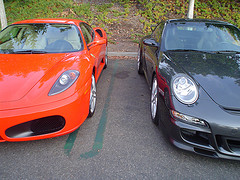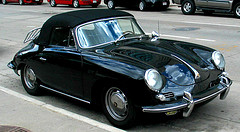Speaking about hardship, they say whatever doesn’t kill you makes you stronger. In the late Sixties, Ferruccio Lamborghini was enduring a string of hardship, despite the fact that his Miura was the darling of the automotive press.  Though once honored by Italy’s president as a “Knight of Labor,” a label that brought with slightly more esteem than being named a “Kentucky Colonel,” his manufacturing plants were plagued by ruinous and long strikes. Communist agitation was everywhere, and the streets were often blotted by the chianti red of rioters’ blood.
Though once honored by Italy’s president as a “Knight of Labor,” a label that brought with slightly more esteem than being named a “Kentucky Colonel,” his manufacturing plants were plagued by ruinous and long strikes. Communist agitation was everywhere, and the streets were often blotted by the chianti red of rioters’ blood.
Infancy concerns
Closer to home, the Lamborghini Miura seemed a victim of its own victory, like a precocious child that can’t quite adjust to adulthood. Read more . . .


 In others words, nice attempt; call us again when you have a winner.
In others words, nice attempt; call us again when you have a winner. The P1800 Volvo he drove, was, at least at first, a British car. It was assembled by Jensen, the renowned English sports car maker, after Karmann Ghia lost out on the bidding to build the car. And in one of the most productive marketing moves in the car industry, Volvo decided to capitalize on the British connection by supplying vehicles for the British TV show, “The Saint,” which starred Roger Moore as the slightly shady, free-lance, womanizing, good guy.
The P1800 Volvo he drove, was, at least at first, a British car. It was assembled by Jensen, the renowned English sports car maker, after Karmann Ghia lost out on the bidding to build the car. And in one of the most productive marketing moves in the car industry, Volvo decided to capitalize on the British connection by supplying vehicles for the British TV show, “The Saint,” which starred Roger Moore as the slightly shady, free-lance, womanizing, good guy.